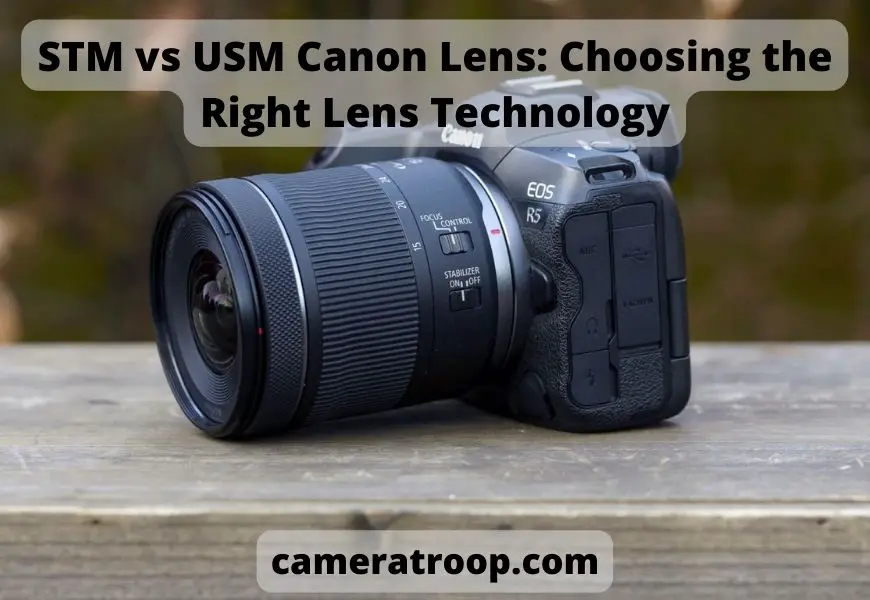
STM vs USM Canon Lens: Choosing the Right Lens Technology
Table of Contents
As an Amazon Associate, I earn from qualifying purchases.
STM vs USM Canon Lens? Selecting the suitable lens for your Canon camera is a crucial decision, which impacts the quality and versatility of your future captured photos.
In this comprehensive comparison, we’ll delve deeper into USM and STM lenses, considering various factors to help you make an informed choice.
Optical Performance and Image Quality
When evaluating Canon lenses, optical performance, and picture quality should be at the forefront of your considerations. Understanding how USM and STM technologies influence these aspects can help you achieve your photographic goals.
USM Lens: Speed and Image Stabilization
The ultrasonic motor is known for its rapid and precise autofocus systems. The ultrasonic motor allows quick and close silent focusing, which is a perfect fit for capturing fast-moving subjects, such as sports marathons or wildlife.

Many Canon USM lenses have advanced image stabilization systems, reducing the chances of blurry photos. This feature is particularly beneficial for handheld shooting at slower shutter speeds.
Types of USM Lens: Micro USM, Ring USM, Nano USM lens
Canon has Nano USM, Micro USM, and Ring USM technology in select models. Nano USM lens aims to balance the speed of USM and the silent focusing of STM.
Nano USM lenses are engineered to provide quick and accurate focusing while maintaining silent operation. This makes Nano USM incredibly versatile for a wide range of applications.
Micro USM lenses emphasize precise and rapid focusing with an even smaller USM motors design.
Ring USM lenses are known for their super-fast and incredibly accurate focusing. Ring USM lenses often include a special ring-type USM motor that lets you manually adjust focus with great precision at any time.
STM Lens: Compactness and Silent Operation
STM lens prioritizes compactness and quiet focusing.
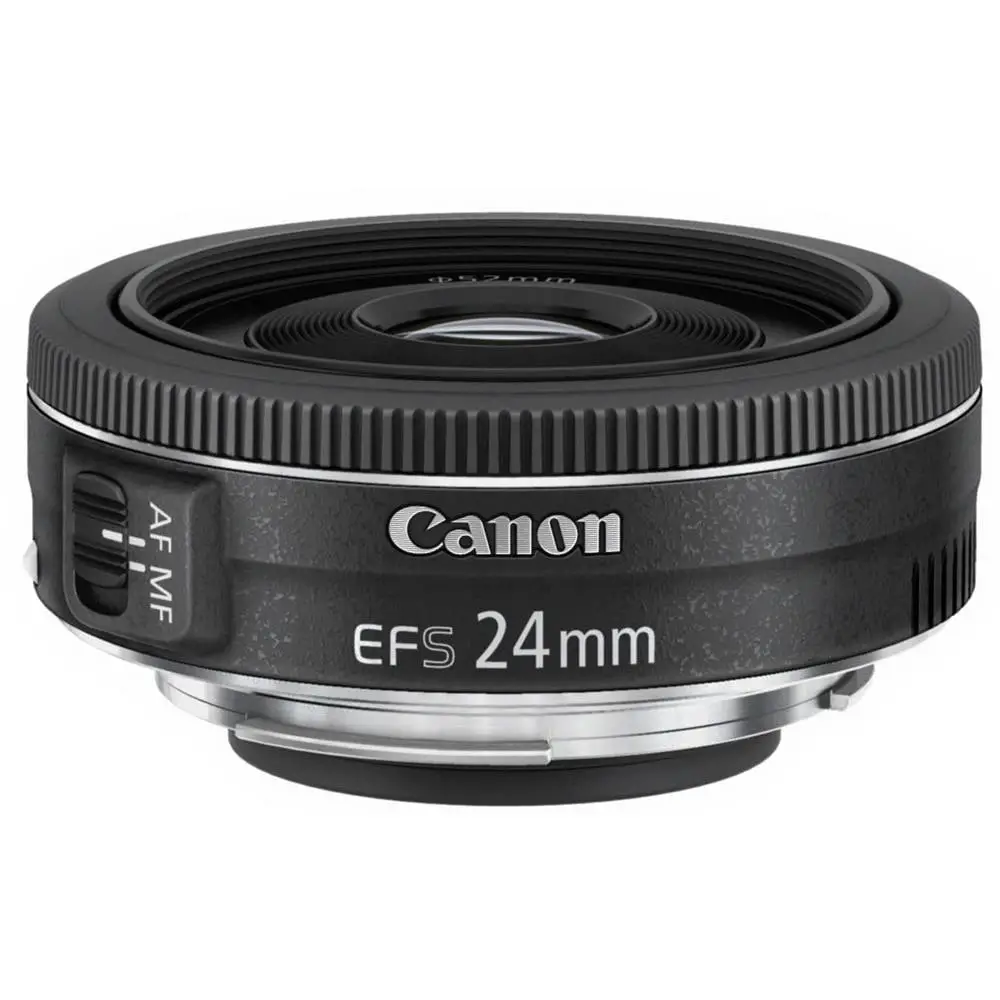
These lenses are engineered for discreet operation, producing minimal lens noise. Wedding photographers, videographers, and street photographers appreciate the silent and smooth features of the Canon STM autofocus system.
STM vs. USM Lens: Optical Performance
Ultrasonic motor lens is highly regarded for its speed, precision, and image stabilization, making it the preferred choice for action photography.
STM lens shines in scenarios requiring silent focusing and is popular among users who seeks discreet operation.
Nano USM lenses combine speed and silence, making them versatile for various applications.
Micro USM lenses prioritize precise and rapid focusing, ideal for macro and detailed photography.
Ring-type USM offers lightning-fast and highly precise focusing, making as the most preferable choice for specialists and enthusiasts looking for ultimate control.
Focus Mechanism
In addition to the autofocus system, it’s essential to understand the focus mechanisms used in Canon lenses.
STM Lens: Focus-by-Wire
Focus-by-wire is a mechanism in which the manual focus ring on the lens is electronically linked to the lens’s focusing elements.

When the focus ring is turned on a lens with focus-by-wire, it essentially sends electronic signals to the lens’s autofocus USM motors to adjust focus.
This approach allows for precise manual focusing but may lack the tactile feel of directly mechanically controlling focus.
Many STM lenses use focus-by-wire systems, making them well-suited for smooth and gradual focus adjustments in video recording.
USM Lens: Direct Manual Focus
Direct manual focus manually adjusts focus without switching the lens from autofocus to manual focus mode.
With FTM, you can fine-tune focus by simply turning the focus ring on the side of the lens barrel, and the lens responds immediately to your manual adjustments.
Canon USM lenses often feature FTM, providing a seamless transition between two types of focuses.
Canon STM vs USM Lens: Focus Mechanism
Focus-by-wire is advantageous for scenarios where precise and smooth manual focusing is essential, such as video recording or capturing subjects with deliberate and slow movements.

Direct manual focus is favored by photographers who want immediate tactile control over focus adjustments. This can be beneficial for quickly fine-tuning focus in fast-paced photography situations.
Build and Durability
The build quality and durability of a lens are vital considerations, especially for photographers who frequently venture into challenging environments.
USM Lens: Rugged and Weather-Sealed
Lenses with ultrasonic motors are often sturdy and come with weather sealing, making them well-suited for outdoor and professional use.
These lenses are produced to withstand the rigors of harsh conditions, ensuring they perform reliably even in rain or dusty environments. Their durability and resilience are essential for photographers who demand rugged equipment.
STM Lens: Lightweight and Portable
In contrast, STM lenses prioritize portability and lightweight design.
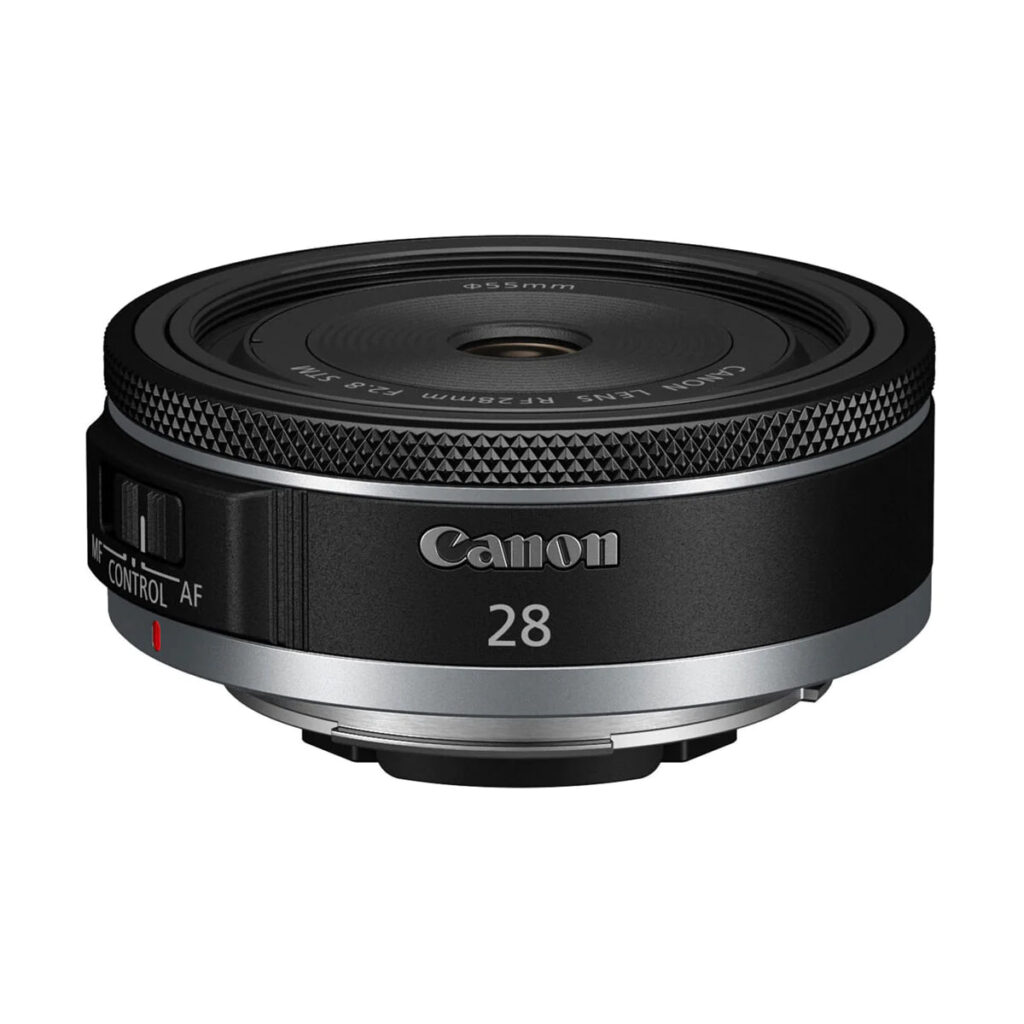
While they may not have the same level of weather sealing as USM lenses, their compact form and reduced weight make them a preferred choice for photographers on the move. Travel photographers will find STM lenses a valuable addition to their gear.
Canon STM vs. USM Lenses: Build and Durability
USM lenses are built to withstand demanding conditions, making them the top choice for professionals and outdoor photographers.
STM lens is lightweight and compact, ideal for those who prioritize portability and convenience, but it may lack the same level of weather resistance.
Price and Availability
Budget considerations and the availability of lenses in your desired focal length and aperture range can significantly influence your decision between STM and USM lenses.
Canon USM Lens: Versatile Range
Canon offers a wide range of USM lenses, catering to varying budgets and photographic needs. This diversity of options means you’re more likely to find a USM lens that fits your specific requirements and budget constraints.
Canon STM Lens: Affordable Option
STM lenses generally come at a more affordable price point.
They are an excellent choice for those who want to enter the world of quality Canon lenses without breaking the bank. STM lens provides good value for money and is suitable for a wide range of photography styles.
While the selection of STM lenses may not be as vast as USM lenses, Canon continues to expand its STM lineup. These lenses are particularly well-suited for Canon’s mirrorless camera body systems, such as the EOS M series.
Canon STM vs. USM Lenses: Price and Availability
USM lens offers a diverse range of options to fit various budgets and photographic needs, ensuring there’s something for everyone.
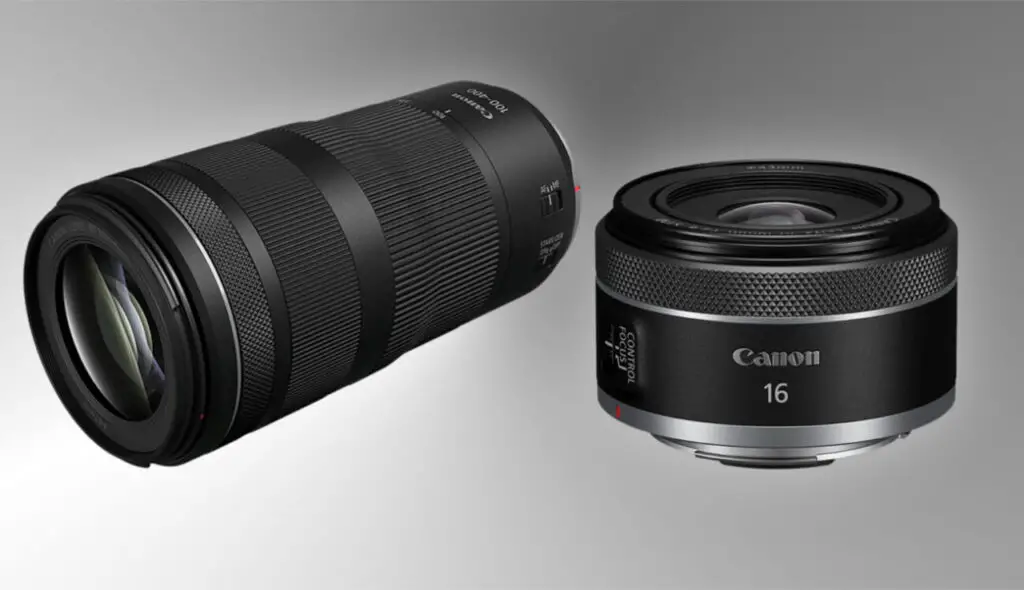
STM lenses are affordable, making them a great choice for photographers seeking quality lenses without a hefty price.
Video Recording Performance
If you are planning to take videos, then it is essential to consider another side of lenses’ features to achieve incredible shoots.
USM Lens: Precision and Smooth Focus for Video
The quiet and nearly silent focusing of the lens eliminates annoying ring-type USM motor noise, ensuring that your audio recording remains clear and uninterrupted.
For videographers shooting handheld or in less-than-ideal conditions, the stabilization of the Canon USM lens is invaluable, resulting in smoother and more steady footage.
The combination of precise focusing and IS makes USM lenses a suitable option for videographers working on a wide range of projects, from documentaries to cinematic productions.
STM Lens: Compactness and Silent Operation for Discreet Video
Canon STM lenses excel in silent and discreet operation, making them a favorite among videographers who require minimal noise during recording.
Wedding videographers appreciate the quiet autofocus systems of STM lenses, ensuring that they capture moments without drawing attention to the lens’s operation.
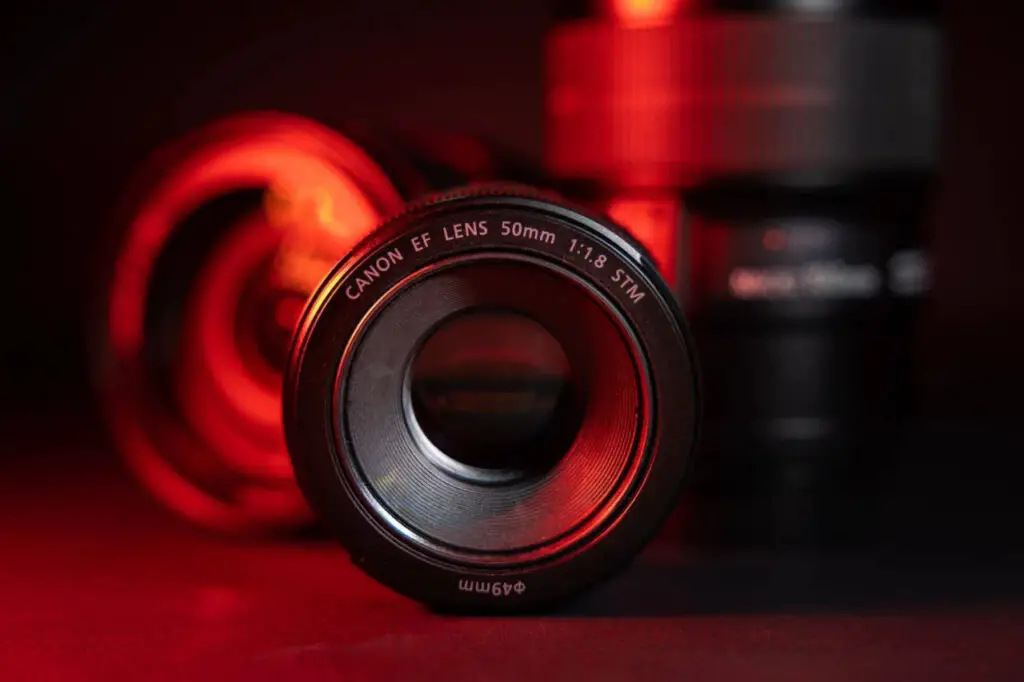
While STM lenses may not match the lightning-fast speed of ring-type USM lenses for focus transitions, their precision and near-silent operation are essential for video creators who prioritize audio quality and unobtrusive filming.
The compact and lightweight design of STM Canon lenses also contributes to their appeal for videographers who need to keep their gear setup minimal and portable.
Canon STM vs. USM Lenses: Video Recording Performance
STM lenses shine in their quiet performance, making them a preferred option for videographers who prioritize inconspicuous filming with minimal noise. Their compact design is perfect for on-the-go videography.

USM lenses offer precise and smooth autofocus, making them ideal for professional videography. Their advanced image stabilization further enhances video quality.
Conclusion
In conclusion, choosing USM or STM lenses should align with your specific photography preferences and requirements.
Canon USM lenses excel in speed, precision, and durability, making them ideal for action and professional photography.
On the other hand, STM lenses prioritize compactness, silent operation, and affordability, making them a versatile choice for a wide range of shooting scenarios, especially in discreet and quiet environments.
To make the right decision, consider your unique needs, budget, and shooting style, ensuring that your chosen lens technology aligns seamlessly with your photographic goals and creative vision.
Frequently Asked Questions
Which lens is better STM or USM?
The choice of the ‘superior’ lens between STM and USM relies on your preferences and the style of photography you engage in. Many photographers find value in having a mix of both types of lenses in their kit, using each where its strengths are most beneficial.
Why USM lens is better than STM?
Canon USM lenses are considered better than STM lenses when it comes to autofocus motor speed, image quality, and precision. They are particularly well-suited for professional photography and fast-action scenarios.
However, it may produce noticeable noise during autofocus operations and come at a higher cost compared to STM lens.
What are the advantages of STM lenses?
They are budget-friendly, versatile, and often equipped with image stabilization, offering a well-rounded option for various photography needs.
What does USM mean on Canon lens?
USM lens on Canon lenses refers to an advanced autofocus technology that offers rapid, accurate, and often near-silent focusing.
It excels in fast-moving photography situations, provides precise focusing, and is suitable for both taking pictures and videos. Several ultrasonic motor lenses function with almost no noise, which makes them well-suited for situations where quiet shooting is important.



